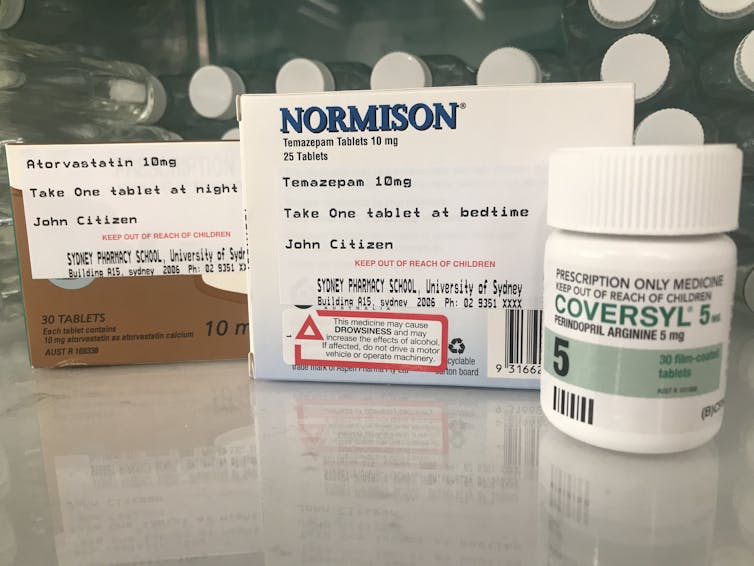
Shutterstock
Alison Poulton, University of SydneyIf your child has been diagnosed with attention deficit hyperactivity disorder (ADHD), you might be wondering: what now? And how do I know if medication is warranted?
The answer will depend on circumstances and will change over time. It’s quite OK to leave medication as a last resort — but it can be a very useful last resort.
Here are some questions I typically work through with a parent and child negotiating this issue.
Five key questions for parents and children with ADHD
1. Is this child underachieving academically in relation to their ability?
Was the child bright as a preschooler but struggled at school for reasons unclear (not, for example, due to vision or hearing problems)? Did they cope OK early in school but didn’t achieve at the level expected when schoolwork got harder?
2. Is this child’s behaviour creating unreasonable levels of stress or disruption at school?
For a child with ADHD to complete a task, it must be sufficiently interesting, short or easy. If a child can’t concentrate in class, they get bored. They might talk in class, create distractions or disrupt class. Obviously, careful judgement is needed to differentiate typical child behaviour from problematic behaviour.
3. Is this child’s behaviour creating unreasonable levels of stress or disruption at home?
At home, is the child able to draw, construct with LEGO, do puzzles or play blocks for longish periods of time? Or do they find the sustained effort needed unachievable? Do they then annoy a sibling to make life more interesting, or constantly ask adults to play with them?
If a child is working on homework for half an hour, how much time is spent concentrating? Are they focused for only ten minutes and the remainder is spent guiding them back on track?
Is the parent tearing their hair out with countless reminders and finding every time they check, the child is distracted again?

Shutterstock
4. Is there a significant effect on peer relationships?
Children with ADHD don’t always have the patience to wait their turn or concentrate on what peers say. They may come across as bossy; they find it easier to focus on what’s happening in their own mind but more challenging to listen and process what others say. Their peers may eventually find someone else to play with.
5. Is there an impact on self esteem?
Is this a smart child who doesn’t think they’re smart because they struggle to concentrate long enough to get work done? Do they speak negatively about themselves? It’s important to take self esteem seriously.
There are also diagnostic criteria that need to be checked.
Support strategies at home and in class
What other supports could help? Is the child sitting at the front of class? Is the teacher giving written instructions? Do they sit next to a good role model?
Has the parent done parenting classes? Have they tried home strategies rewarding good behaviour, or giving appropriate consequences for problematic behaviour?
Having a chart for the morning routine can be helpful. Many such strategies work nicely on children without ADHD. But children with ADHD often find the effort needed to earn a sticker isn’t worth it and may try to negotiate ever greater rewards.
If you’ve got to the end of that road and the child is still having problems, you might consider medication.

Shutterstock
Read more:
ADHD: claims we’re diagnosing immature behaviour make it worse for those affected
What does medication do?
With ADHD, it’s like your brain is running on a half-charged battery. Your concentration keeps flicking off or winding down. Medication makes it more like your brain is running with a fully charged battery.
The active ingredient in medication is usually a stimulant such as dexamphetamine or methylphenidate. You might know it by the brand name Ritalin.
These stimulants wear off quickly — after about four hours. That may help the child get through the school morning; they may need another dose at lunch and perhaps a third dose if they have after-school activities. There are also capsules that release medication more slowly.
The medication is always wearing off and you are back to square one. On the one hand, that’s a nuisance. On the other, it means you can try medication, then stop and you’ll still have the same child you had at the beginning.
You start low and increase gradually until you find a dose that lasts about four hours. The teacher can help with feedback. The dosage may need to be adjusted as the child grows. These decisions are all made with the support of the clinician.
Generally, you get improvement up to a point where no further benefit is seen. If the dosage is too high, a child may seem aggressive, depressed or “zombie-like”. Nobody wants a dosage that is not leading to a better outcome.

Shutterstock
What about side effects?
The most significant side effect is appetite suppression, so we monitor weight and height closely. Generally, weight stabilises in the long run.
Rebound hyperactivity as the medication wears off and difficulty sleeping can occur. Sometimes this can be managed by changing the dosage or by not medicating too late in the day.
The decision to give medication is made on a daily basis. If you aren’t happy, you can omit it and see how things go.
This medication improves anyone’s concentration, not just children with ADHD, so it’s also sometimes a drug of abuse (among university students, for example). When used for treating ADHD, the risk of addiction is minimal.
But if you have concentration problems, you have more scope for improvement. A child who is concentrating most of the time cannot experience much improvement.
Reviewing progress
I always ask the child: does the medication work? How do you know? I might find out from a teenager that their concentration has improved from 20% to 80% or 90% of classtime. A younger child who prefers to feel in control of their behaviour may actually remind the parent when the next dose is due.
Often I hear from parents the child is now keen to get homework done, has more friends and feels happier and more confident.
All parents want their child to feel they’re functioning and fulfilling their potential. Most will achieve this without medication. That’s plan A. Plan B is that they are fulfilling their potential and living a great life, helped by medication.
Doesn’t every child, every person, with ADHD deserve a plan B?
Read more:
ADHD prescriptions are going up, but that doesn’t mean we’re over-medicating
![]()
Alison Poulton, Senior Lecturer, Brain Mind Centre Nepean, University of Sydney
This article is republished from The Conversation under a Creative Commons license. Read the original article.




